 |
 |
 |
| |
Switch to Atripla from Undetectable HAART
|
| |
| |
Reported by Jules Levin
11th EACS, Oct 24-27, 2007, Madrid
"Virologic Suppression Is Maintained After Change To Efavirenz/Emtricitabine/Tenofovir Disoproxil Fumarate Single Tablet Regimen (EFV/FTC/TDF) vs. Continuation of Current Antiretroviral Therapy: Study 073 -Results of 24-week Interim Efficacy Analyses"
Reported by Jules Levin
11th European AIDS Conference, Madrid, Spain, October 26, 2007
DeJesus E1, Young B2, Fisher A3, Ebrahimi R3, Maa J-F4, Seekins D4, Flaherty J3, Farajallah A4 for the AI266073 Study Group
1Orlando Immunology Center, Orlando, FL; 2Denver ID Consultants,
Denver, CO; 3Gilead Sciences Inc., Foster City, CA; 4Bristol-Myers Squibb,
Plainsboro, NJ, USA
AUTHOR CONCLUSIONS
Through 24 weeks, subjects with virologic suppression on their current ARV therapy maintained high and comparable rates of virologic suppression when changed to a single tablet regimen consisting of EFV/FTC/TDF given once daily
High and comparable rates of virologic suppression were observed within the PI and NNRTI stratum
Low rates of discontinuations were observed in both treatment arms
Further analysis of viral suppression through 48 weeks as well as safety & tolerability data are in preparation
BACKGROUND
Co-formulated EFV/FTC/TDF is the first once a day single tablet antiretroviral regimen approved in the United States and Canada
Components have demonstrated efficacy and safety in clinical studies1
Positive CHMP opinion issued in Europe
EFV/FTC/TDF can offer an option for antiretroviral regimen simplification to
patients intolerant to or receiving more complex regimens
HYPOTHESIS
To evaluate whether virologically suppressed patients who changed their
current HAART regimen to the single tablet regimen of EFV/FTC/TDF will have similar effectiveness (efficacy, safety and tolerability) compared to patients who
remain on their unmodified HAART (stayed on baseline regimen- SBR) through 48 weeks
STUDY DESIGN
This is a phase 4 multicenter, randomized, controlled study in the US. Patients on stable HAART, PI or NNRTI plus 2 NRTIs for 3 months or longer and no history of virologic failure, and less than 200 copies/ml. Patients were switched 2:1 to Atripla or to remain on their current PI or NNRTI regimen. Planned interim analysis at 24 weeks; primary objective is to compare proportions of patients with HIV RNA <200 copies/ml at week 48 between treatment arms using favorite FDA analysis TLOVR after the last patient completed 48 weeks on study.
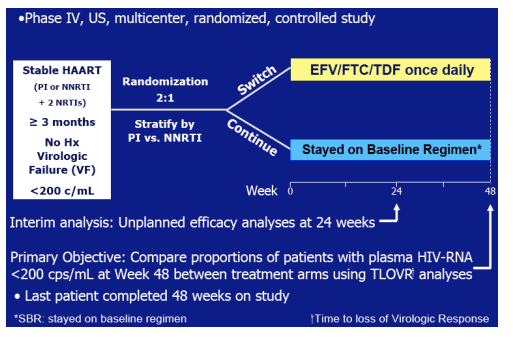
STATISTICAL METHODS
Primary endpoint will assess non-inferiority of EFV/FTC/TDF compared to SBR employing a delta of 15% for maintenance of HIV RNA <200 cps/mL at Week 48
Assessments are based on ITT analyses
Study used two statistical methods for the Week 24 analyses
-- Missing = Failure (M=F)
-- Pure Virologic Response (PVR): Using Kaplan Meier (KM) method
Non-response for PVR was defined as two consecutive HIV RNA > 50 and > 200 copies/mL or last observed HIV-1 RNA above threshold followed by discontinuation from the study*.
*HIV-1 RNA measured using Roche Amplicor V1.5 ultrasensitive assay
BASELINE CHARACTERISTICS
Almost 90% are men; age 43 yrs; about 30% are black or African-American. Mean cd4 was 540. 6% in Atripla arm and 13% in SBR had <200 cd4. Of those randomized to Atripla 47% were on a NNRTI regimen and 53% were on PI regimen. For those continuing on the same regimen 46% were on a NNRTI regimen and 54% on a PI regimen. 96% of patients switched to Atripla had <50 c/ml before switching and 3% had between 50-200. Of those staying on the same regimen 98% had <50 c/ml at the beginning of the study and 2% had 50-200.
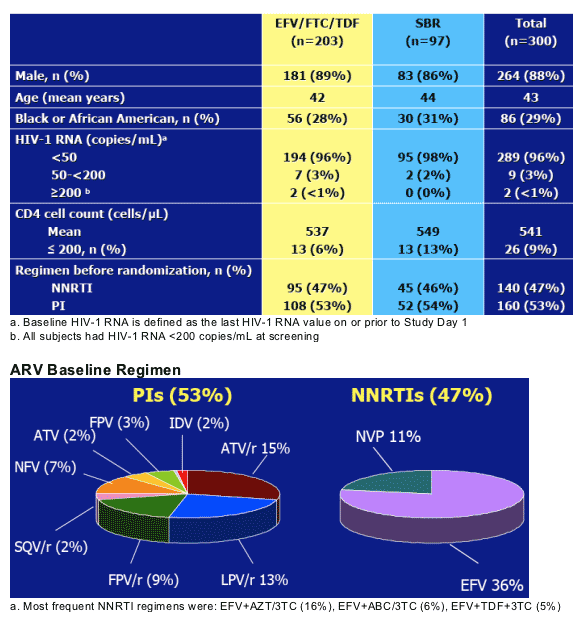
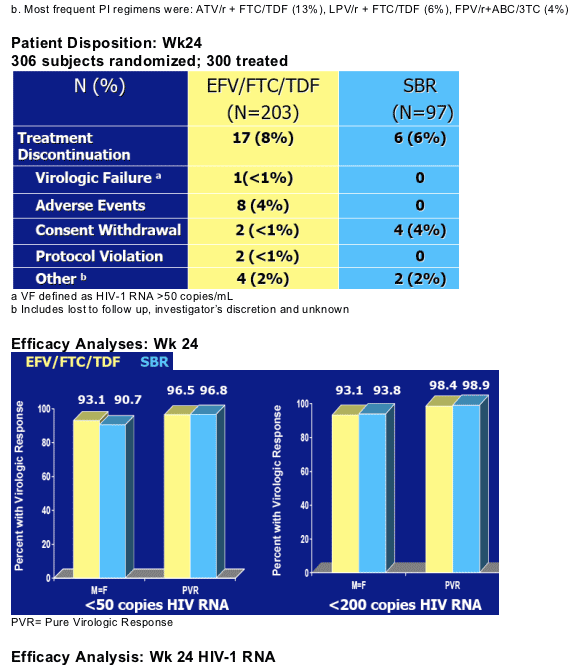
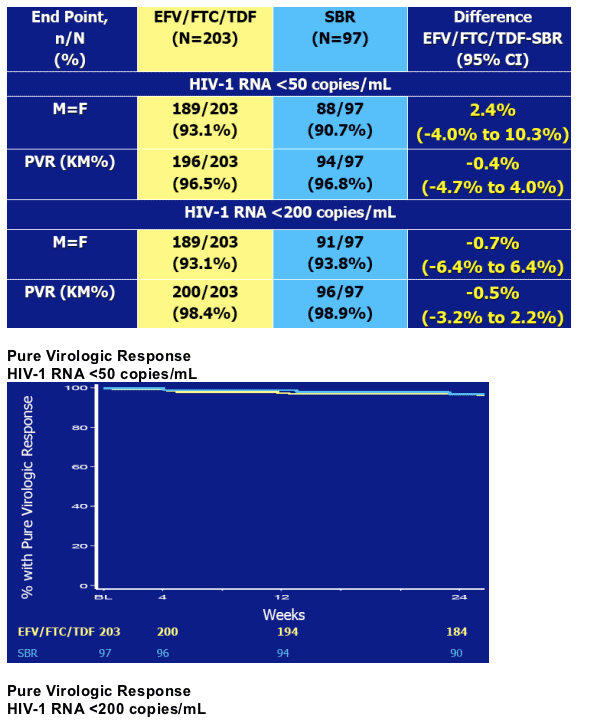
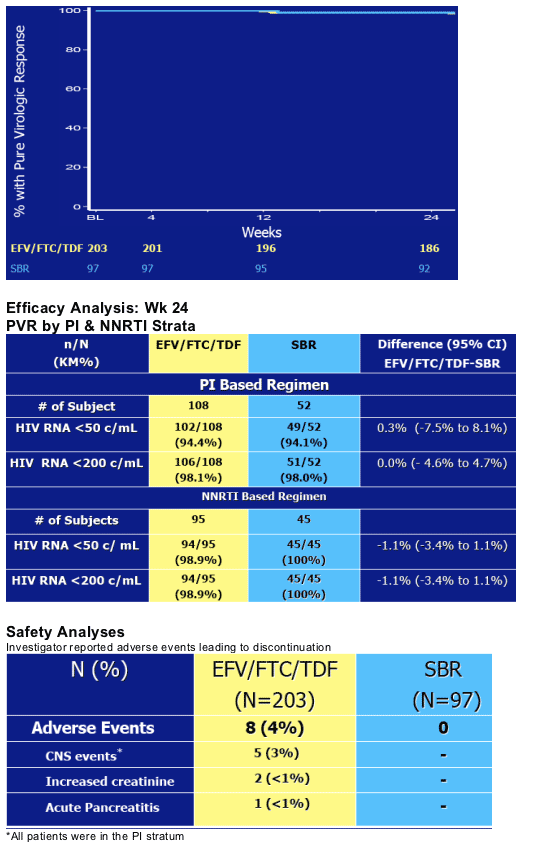

|
| |
|
 |
 |
|
|